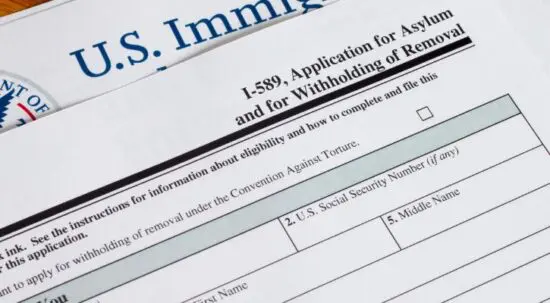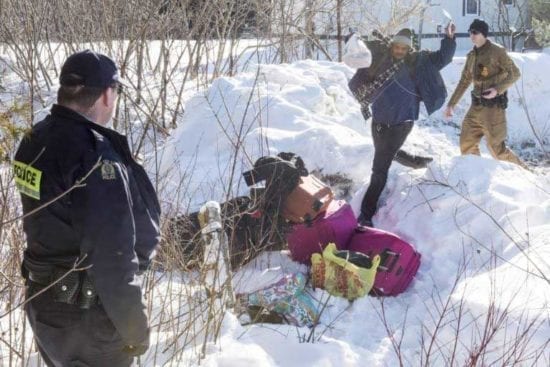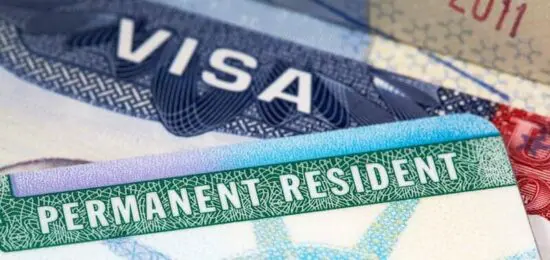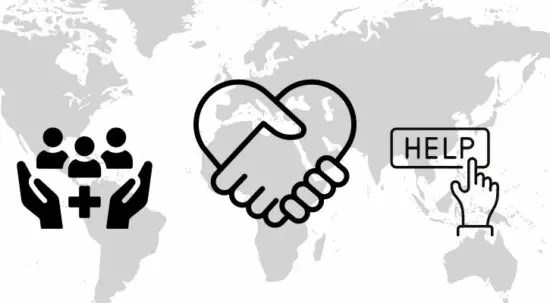پناهدگی چیست؟
پناهندگی نوعی حفاظت است که به شما امکان میدهد در ایالات متحده بمانید اگر در کشورتان به خاطر نژاد، دین، ملیت، عضویت در گروپ اجتماعی خاص، یا عقاید سیاسی مورد اذیت قرار گرفتهاید یا میترسید که مورد اذیت قرار گیرید.
اگر قبلاً در ایالات متحده آمریکا هستید، باید ظرف یک سال پس از ورود به ایالات متحده، برای پناهندگی اقدام کنید . اگر بیش از یک سال پیش وارد شده اید و درخواستی ارسال نکرده اید، در اسرع وقت با یک وکیل صحبت کنید تا ببینید آیا واجد شرایط استثنا در مهلت هستید یا خیر.
آیا من میتوانم در مرز ایالات متحده-مکزیکو درخواست پناهندگی بدهم؟
دستورات اجرایی اخیر عبور از مرز ایالات متحده و مکسیکو و درخواست پناهندگی در مرز را بسیار دشوارتر کرده اند. شما هنوز هم حق قانونی برای درخواست پناهندگی دارید. با این حال، دولت ایالات متحده در مرز وضعیت اضطراری ملی اعلام کرده است. این به معنای قوانین سختگیرانه تر و اجرای بیشتر است. در تاریخ 2 جولای 2025، یک محکمهٔ فدرال این اقدامات را متوقف ساخت، که ممکن است منجر به تغییرات بیشتری گردد.
- افرادی که در حال عبور از مرز گرفتار شده اند، فوراً از مرز خارج می شوند. اگر بدون اجازه از مرز عبور کنید، ممکن است فوراً بدون هیچ فرصتی برای درخواست پناهندگی یا سایر حمایت ها به کشور بازگردید.
- افراد در دروازه داخل شدن به عقب برگردانده می شوند. اگر شما کوشش کنید که خود را در یک دروازه داخل شدن رسمی معرفی کنید، احتمالاً شما رد خواهید شد.
- برنامه CBP One دیگر در دسترس نیست. شما دیگر نمیتوانید که از برنامه CPB One برای زمانبندی وقت ملاقات جهت ارائه در بندر دخولی برای درخواست پناهندگی استفاده کنید. تمام ملاقات قبلی لغو شده است.
- آزادی مشروط CBP One لغو شده است. اگر شما با استفاده از اپلیکیشن CBP One داخل ایالات متحده شدهاید، ممکن است آزادی مشروطت زودتر به پایان برسد. بسیاری از مردم از DHS اخطاریه ها را دریافت کرده اند مبنی بر اینکه آزادی مشروط آنها به پایان رسیده است و به آنها گفته شده است که اگر تحت تأثیر قرار گرفتید، ایالات متحده را ترک کنید، در اسرع وقت با یک وکیل مهاجرت صحبت کنید. شما هنوز هم ممکن است بتوانید برای پناهندگی یا اشکال دیګر امداد درخواست دهید.
- افزایش نیروهای نظامی و مرزی. ایالات متحده در مرز جنوبی ایالات متحده وضعیت اضطراری ملی اعلام کرده است. باید انتظار افزایش بازداشت، استفاده از زور، حضور نظامی، ساخت دیوارهای گسترده و ابزارهای نظارتی مانند هواپیماهای بدون سرنشین در سرحد را داشته باشید.
- برنامه در مکسیکو بمانید (MPP) متوقف شده است. یک حکم محکمه این ضرورت را برای برخی از افرادی که به دنبال پناهندگی در مرز جنوبی هستند تا در مکسیکو در حالی که منتظر قضیه های معلق محکمه مهاجرت ایالات متحده هستند، متوقف کرده است.
- عنوان 42 ممکن است بازگشت. ایالات متحده ممکن است عنوان 42 را دوباره به کار بینداز، سیاست بهداشت عمومی که به دولت اجازه می دهد تا به سرعت مردم را در مرز بدون پردازش ادعای پناهندگی اخراج کند.
- کودکانی که به تنهایی وارد میشوند، میتوانند بهسرعت اخراج شوند.کودکانی که بدون والدین یا سرپرست به ایالات متحده می آیند، اکنون میتوانند فوراً برگشت داده شوند، بدون اینکه فرصت درخواست پناهندگی در محکمه را داشته باشند.
- جریمه های جدید برای عبور از مرز. هر فرد بالغ یا طفل که از مسیرهای غیررسمی وارد کشور شود، ممکن است اکنون با جریمهٔ 5000 دالری مواجه گردد، حتی اگر درخواست پناهندگی داشته باشد.
| اگر ماموران مهاجرت شما را بازداشت کرده و شما می ترسید به کشور خود برگردید، بگویید "من می ترسم به کشورم برگردم " تا حد امکان واضح و بلند. هر وقت که می توانید آن را تکرار کنید. |
کمک را دریابید
روند پناهندگی بسیار پیچیده است. مهم است که گزینه های خود را برای کمک قانونی بررسی کنید. بسیاری از سازمان ها و وکلا خدمات حقوقی رایگان یا کم هزینه و پشتیبانی ارائه می دهند. برخی از آنها در زیر ذکر شده است.
با کمک یک وکیل مهاجرت یا نماینده قانونی معتبر شانس بیشتری برای دریافت پناهندگی دارید. آنها می توانند به شما کمک کنند تا درخواست خود را تکمیل کنید و برای مصاحبه یا جلسه خود آماده شوید.
- آیا نیازمند کمک قانونی؟ یاد بگیرید چگونه برای پیدا کردن پشتیبانی.
- درخواست پناهندگی؟ به Asylum Seeker Advocacy Project بپیوندید.
- بازداشت شده یا کسی را می شناسد که هست؟
- تماس با خط تیلفون توقیف مهاجرت در 209-757-3733 و یا دیگر خطوط تلفن مفید
- اطلاعات در مورد حقوق خود را با ICE و CBP
- بدانید در بازداشت چه انتظاری باید داشت
سازمان های محلی کمک به مردم در نزدیکی مرز
با سیاست های سختگیرانه تر پالیسی مهاجرت، سازمان های غیر انتفاعی و پناهگاه ها بسته شده اند. این لیست ممکن است کاملا دقیق نیست.
آریزونا
Florence Immigrant & Refugee Rights
کمیته نجات بین المللی
ابتکار مرز Kino
کالیفرنیا
Al Otro Lado
فرشتگان مرزی
مهربانی مرزی
ImmDef
خدمات خانواده یهودی
نیومکزیکو
Catholic Charities
تگزاس
Annunciation House
Good Neighbor Settlement House
مرکز حمایت از مهاجران لاس آمریکا
ProBAR
کمک حقوقی ریوگراند تگزاس
اگر به دنبال پشتیبانی در خارج از ایالات متحده هستید، بیاموزید که کجا می توانید کمک بین المللی پیدا کنید.
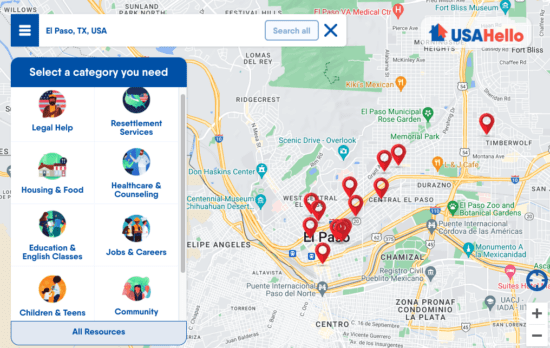
پشتیبانی قانونی و سایر خدمات مهاجرتی را در منطقه خود بیابید.
معلومات این صفحه از DHS, non-profit organizations working at the border, و منابع دیگر معتبر بدست می آید. هدف ما ارائه معلوماتی است که به راحتی قابل درک باشد و به طور منظم بهروزرسانی شود. این معلومات مشاوره حقوقی نیست.
